You can eat healthy on a budget without giving up flavor or convenience!
The best food we can eat isis packed with nutrients, yet not packed with calories. Inexpensive isn’t a bad trait either, and the cheapest foods can be canned, frozen, or fresh.
What if you have a craving for something sweet? No problem, just walk past the calorie-laden cookies and cakes and head for the seasonal fruit section. Fruit is naturally energizing and high in fiber and nutrients. Use some coupons to add some non-fat or vegan yogurt, and you’ve got a yummy, healthy, budget dessert.
Get your list, pack the kids in the car and get ready to shop differently. Here are some ways to stretch your grocery dollars a little further:
1. Buy In-Season Produce
Check your local newspaper each week for deals on fresh local produce. In-season foods will be priced to move, with summer corn costing as little as a dime per ear. Local farmers markets are also a good source of fresh bargains.
2. Shop Coupons and Sales
Scheduling meals around weekly sale items can drastically lower your food bill, especially if you’re also using coupons. The Sunday paper is packed with circulars and coupons. Store extra items in your freezer until you’re ready to use them.
3. Pack a Lunch
Brown bagging it is not only a money saver, but it’s a great way to finish up leftovers at school or work. Since Packed lunches are often much healthier than the meals you’d grab on the go, because you have complete control over the ingredients of your meal.
4. Buy Dried, Canned, or Frozen
Next time you’re gathering items for a special recipe, try using dried, canned, or frozen foods. They’re cheaper and can be just as nutritious.
Items are frozen, canned, or dried at their peak freshness, assuring no loss of nutrients. Poultry and fish are sometimes flash-frozen, which retains freshness and fights off freezer damage. Dried fruits are also a great alternative to fresh fruit.
5. Save Money on Protein Sources
Substitute cheaper vegan sources when you can, such as legumes, tofu, tempeh, seitan, and beans, in place of expensive poultry, meat, and fish. Eating vegan at least once a week will make a noticeable dent in your grocery bill while allowing you to increase your healthy food consumption.
If you’re not vegan, eggs are a superb source of protein and can be eaten for any meal. If you do purchase meats, choose lean cuts or small portions. Of course, when it comes to meat, it’s important to go for quality. It’s better to buy a bit less meat that’s sourced from a family farm rather than a value pack that was likely factory farmed.
6. Avoid Waste
With every perishable item you place in your cart, stop and consider how you will use it. The Environmental Protection Agency (EPA) estimates the yearly food waste of Americans at 30 million tons. Show your creativity and use leftover meat, poultry, and vegetables in casseroles, salads, and stews. Leftover chicken has a million uses, including as a topping for fresh greens, fruits, and vegetables. Reducing food waste is better for your budget and for the planet.
What do you guys do to stretch your grocery budget while still keeping it healthy and sustainable? Share your ideas in the comments!
Photo credit: ![]()
![]()
![]() Some rights reserved by I-5 Design & Manufacture
Some rights reserved by I-5 Design & Manufacture
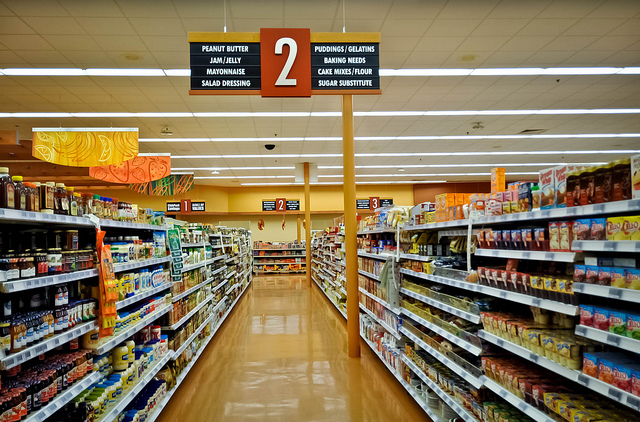

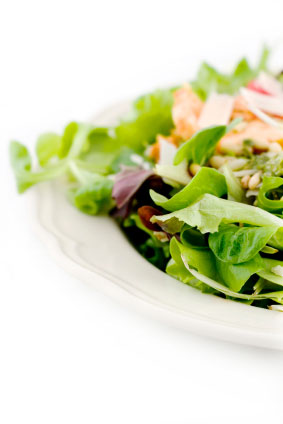
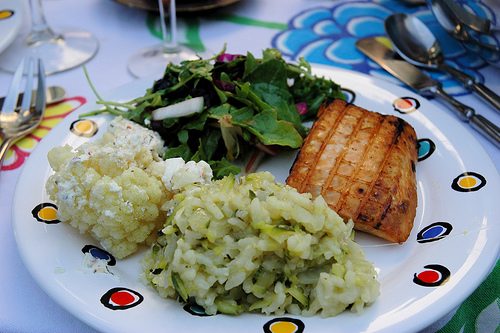


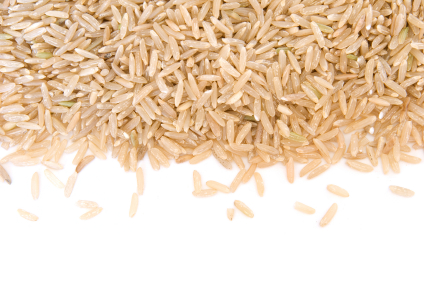
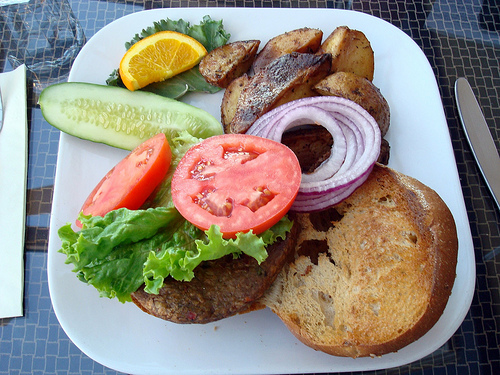

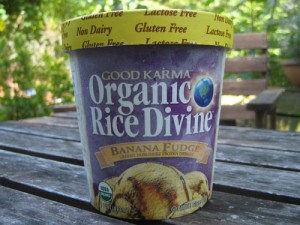
“4. Buy Dried, Canned, or Frozen, Next time you’re gathering items for a special recipe, try using dried, canned, or frozen foods. They’re cheaper and can be just as nutritious.”
The problem with canned is the now put a plastic coating to line the cans, this leeches BPA into the contents of the can. Try to stay away from cans. http://www.organicconsumers.org/articles/article_6472.cfm
A study by the Environmental Working Group tested commonly eaten canned foods from grocery stores in three US cities, including Oakland. Out of 97 cans, 57 percent contained detectable and often high levels of BPA. Pastas, soups, and infant formula accounted for some of the highest levels. The group estimates that BPA exposure is unsafe in 10 percent of all canned food and a staggering one-third of infant formula.
First synthesized in 1891, bisphenol A is an artificial estrogen that is particularly useful in creating plastic polymers. It is used in a wide variety of products manufactured around the globe, including CDs, fax paper, car parts, adhesives, and bullet-proof laminates. It creates hard plastics, like #7 water and baby bottles, and is also used in epoxy can liners to reduce spoilage of the food inside. BPA has been detected in rivers, soil, and household dust-and is turning up increasingly in studies of human chemical loads. One study found BPA in 95 percent of 400 American adults. It has also been detected in the amniotic fluid surrounding human babies.
For many years now, exposure to BPA has been associated with cancer, insulin resistance, and birth defects. Tests beginning in the ’30s showed that high doses are toxic to rodents. In 1997, it was discovered that low levels of BPA produced harmful effects in male mice exposed in the womb, enlarging the prostate and lowering sperm count. What was most unexpected-and alarming-was that low-dose experiments produced worse effects in the mice than high-dose. Since then, nearly a hundred studies have shown BPA to be toxic in low doses on animals, producing such effects as insulin resistance, damaged DNA, miscarriage, decreased testosterone levels, early puberty, and the production of breast cancer and prostate cancer precursor cells.
That’s a really good point, Rick! There are a few companies, like Eden Organic, that use BPA free cans, but otherwise canned food is definitely not always the healthiest choice.